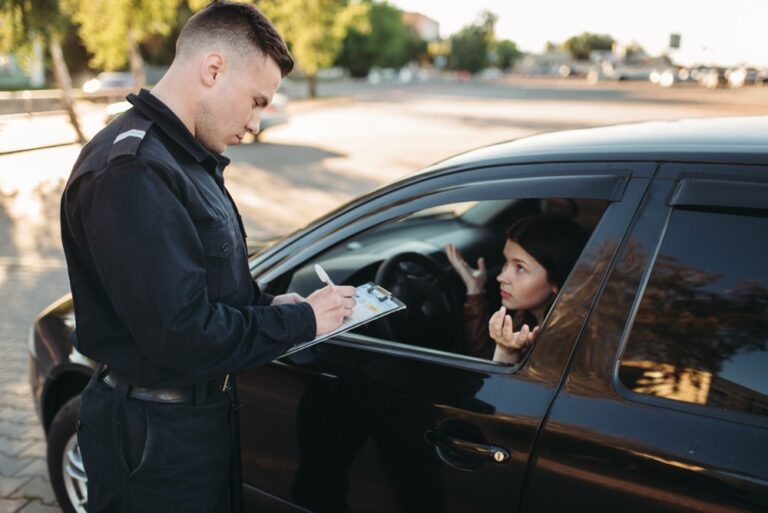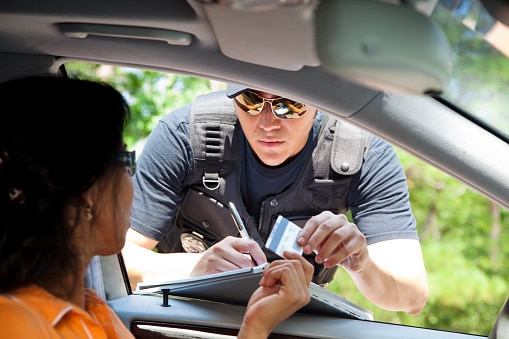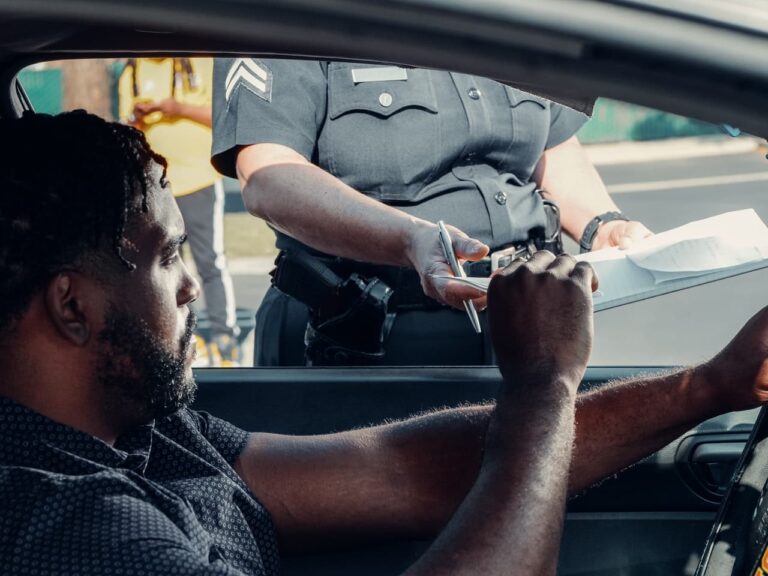In Ontario, the Highway Traffic Act (HTA) regulates the rules of the road. But there are also driving offences that fall under the Criminal Code (CC) of Canada and, as such, result in more severe consequences. It is important to know what those are.
One of the big things to know is that a charge under the Criminal Code of Canada can happen ANYWHERE. It can happen on private property as well as public, and it doesn’t have to be on a highway. So all those HTA offences that don’t apply in parking lots? That’s not the case with Criminal Code.
Section 219: Criminal Negligence
Criminal negligence is defined under the Criminal Code as “doing anything, or omitting to do anything that is his duty to do, shows wanton or reckless disregard for the lives or safety of other persons”
There are three levels of negligence under the Criminal Code
- Civil negligence: which is a momentary unintentional inattention or inadvertent negligence. Because there is no intent, careless driving is defined as civil negligence and so falls under the HTA rather than the Criminal Code
- Marked departure from Reasonable Behaviour/Driving: this is an intentional inattention, unreasonable conduct, exceeding momentary inattentiveness. It causes endangerment to others and the person knows or ought to have know the consequences. Dangerous driving is considered this type of negligence and so is under the Criminal Code.
- Marked and Substantial Departure from Reasonable Behaviour/Driving: this is a flagrant, willful blindness to risk, and this level of negligence becomes its own charge under the Criminal Code
This is a charge that can be tacked onto other charges under the Criminal Code, like dangerous driving, street racing etc. It is also a charge that gets more severe when the criminal negligence causes bodily harm or death.
Section 249 (1): Dangerous operation of motor vehicles, vessels and aircraft
Dangerous driving is different than Careless driving, which is covered under the HTA and we covered here.
If someone is driving a vehicle in a manner that is dangerous to the public he/she can be charged with Dangerous driving which falls under the Criminal Code. “Dangerous to the public” entails many details. It includes the nature, condition and use of the place where a person is driving the vehicle, or the amount of traffic where driving the vehicle and whether the traffic conditions are expected to be a certain way at the time of driving the vehicle.
Dangerous driving, like other driving charges under the Criminal Code also includes vessels, aircraft and railway equipment. Any driving of these vehicles that is dangerous to the public regarding all circumstances: the nature and condition of the equipment (if it is unsafe to drive) or the place in or through which the equipment is operated.
If someone is driving dangerously and also causes bodily harm he/she can serve up to 10 years in prison, and if he/she causes death it can be up to 14 years.
Section 252: Failure to stop at the scene of an accident
The failure to stop offence requires when a driver has care or control of a vehicle and is involved in an accident with with another person, vehicle, aircraft, vessel or cattle. Yes, cattle. When the accident happens the driver is required to do three things:
- Stop
- Provide identification
- Offer assistance
If the driver fails to do these three things then he/she can be charged under the Criminal Code.

Section 249.2: Street Racing
Street racing on its own is a charge that falls under the Highway Traffic Act. It has a broad definition that can include racing, stunts, or wagering on any race or stunt.
However, under the Criminal Code, street racing is defined differently as “operating a motor vehicle in a race with at least one other vehicle on a street, road, highway or other public place.” So, like other CC charges, this offence can occur anywhere, not just on a highway.
This charge becomes much more severe if dangerous driving, criminal negligence causing bodily harm or criminal negligence causing death are involved.
The result can be:
- Up to five years in prison (for dangerous driving while street racing)
- Up to fourteen years in prison (for bodily harm by criminal negligence while street racing)
- Imprisonment for life (for death by criminal negligence while street racing)
Section 253 (1): Operation of a vehicle or vessel while impaired:
This is the obvious. If a person drives while impaired, he/she can get charged under the Criminal Code. This includes driving a boat, aircraft, train – any kind of vehicle. In this charge, a motor vehicle can include railway equipment which is different than other vehicle charges under the Criminal Code. Even if the vehicle is not in motion, a person can get charged. “Impaired” means being under the influence of a drug or the Blood Alcohol Concentration is higher than 0.08%. A person doesn’t have to be at 0.08% to be considered impaired: 0.05% and higher can result in a ticket.
Section 253 (2): Impaired driving causing bodily harm
If a person is driving impaired and causes bodily harm to another person as a result of the impaired driving, he/she is charged under the Criminal Code and can get up to 10 years in prison.
Section 253 (3): Impaired driving causing death
If a person is driving impaired and causes an accident which results in a death, he/she is charged under the Criminal Code and can get up to life in prison.
For more information on impaired driving and for legal assistance go to Brian Starkman’s website.
Every situation is different. Remember you have a right to fight your ticket. At Bulwark Legal Services we provide free consultations. You can go to our website and send us a copy of your ticket. We will help you decide the right course of action to take.


